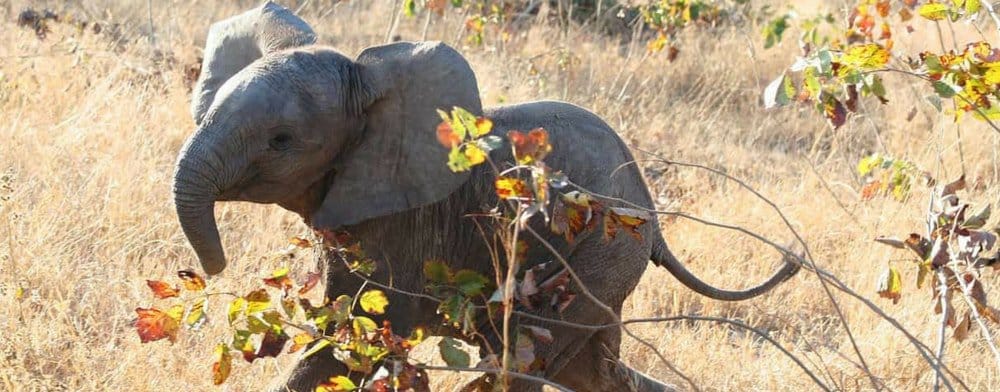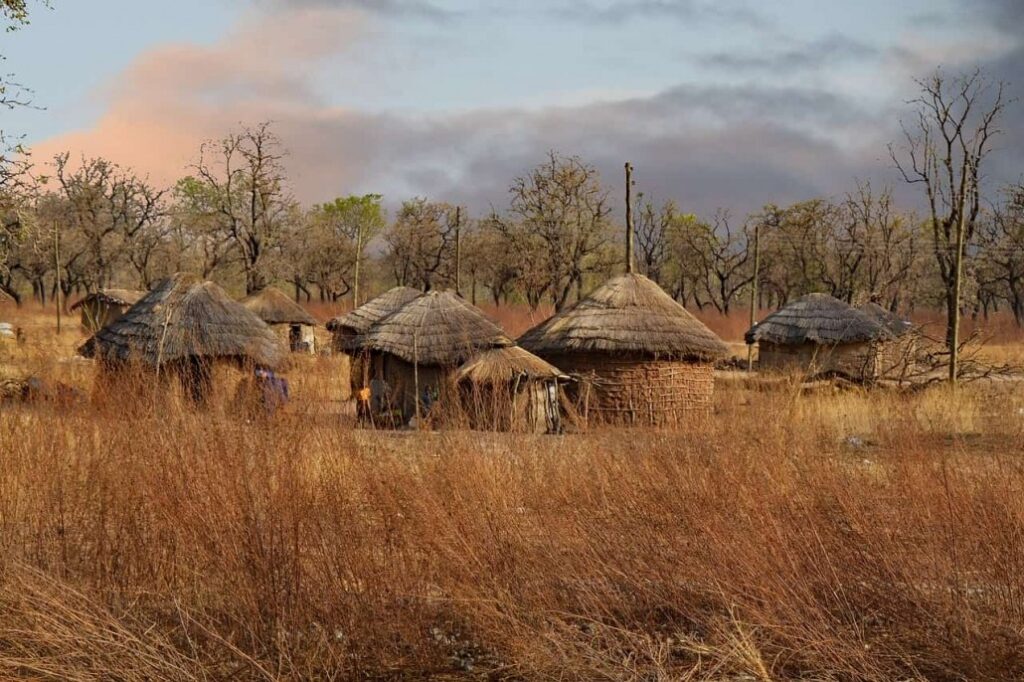
Landlocked Zambia shares borders with eight countries in southern Africa, and offers world-class safaris, adrenaline-pumping adventure, and unique learning experiences. We’ve put together a fun list of the best tourist attractions to explore in Zambia, a country that’s similar in size to Texas.

The crown jewel of Zambia is one of the most impressive sights in the world. A UNESCO World Heritage Site, Victoria Falls straddles Zambia and Zimbabwe with a 2km sheet of water falling off the cliff. Wet weather gear is necessary at the falls, thanks to the heavy mist that drenches those who take the opportunity to touch the water before it plummets to the river below.
With ungodly amounts of water plunging over Victoria Falls every second, nature has created rock pools just before the plunge point. When the water levels of the Zambezi Rivers drops (in August) there’s an opportunity to jump into these pools for the ultimate adrenaline experience. The natural barrier created by the falls makes it a safe, yet adrenaline-pumping photo opportunity with a permanent rainbow formed from the mist of the falls.
Taking a cruise on the Zambezi River while enjoying dinner and the sunset is a memorable occasion. The entire journey is a luxurious experience, with the crew and reception on hand to ensure you have an immersive and entertaining evening with incredible food. The boats launch from a few kilometres above Victoria Falls and, as you make your way down the river, the staff will point out any wildlife-spotting opportunities.
African markets are full of colour, noise, goods and people. In Zambia’s capital city, Lusaka, there are several markets offering different experiences to match individual tastes. For people looking to buy souvenirs, the Arcades Shopping Centre vendors have a variety of wares to browse through. For a more authentic market experience with fruit, vegetables, meat and consumer goods, the Town Centre Market and Lusaka City Market are the places to be. The atmosphere is more intense, as the market is thriving with locals going about their days, which means the prices are less likely to being inflated for tourists.
Cooking classes offer a local and educational experience. They start with a visit to the local markets to buy produce, before returning to the kitchen where students have a hands-on experience cooking local cuisine. In Livingstone you’ll find an array of international restaurants catering to tourist demand, which makes finding places that serve meals inline with the normal cuisine harder to find. Zambian cuisine is focused around nshima, which made from white maize.
In a building that looks like it has come straight out of Soviet Russia, the National Museum has four galleries full of information about the history of Zambia, including a display about witchcraft. The number of displays isn’t large but the amount of information on the signboards is well organised and everyone can get a deeper understanding of the country with a visit.
Siavonga is known as the ‘Riviera of Zambia’, attracting domestic and international tourists to the banks of Lake Kariba. The lake has a lot of activities for all ages, including building sandcastles on the beach, relaxing on a houseboat, and paddling along the shores in a canoe. The Dam Wall is worthy of a visit too, given its significance to the country. Completed in 1960, the Dam Wall makes Lake Kariba the largest man-made lake in the world. It also provides the majority of Zambia’s power. You can walk along the hydroelectric dam, which is the best way to get a feel for its size. Oh, and the Siavonga sunsets are too die for!
The Blue Lagoon is an undiscovered gem 120 km from Lusaka that has recently opened to the public. In dry season, the vast plains of dry land extend as far as the eye can see, differentiating this national park from others in the country. In wet season, the plains transform into gorgeous wetlands, attracting birds and lechwe to the shallows. Keep your eyes peeled for an unusual animal at the Blue Lagoon National Park. Massive river pythons are drawn here by lechwe and birds, which are lucrative prey.
Lake Tanganyika is the longest freshwater lake in the world and the second deepest, reaching as low as 1,433 metres. The draw for visitors is the Kalambo Falls near the border shared with Tanzania. With a height of 221m, they are twice the height of Victoria Falls. The width of the falls varies; in dry season it can be as little as 2m and in the monsoon season can reach up to 15m wide, making this the best time for viewing.
The Gorge Swing, the world’s first commercial high wire, is above the Zambezi River leading to Victoria Falls. A cable stretches 135 metres across the gorge and is 75 metres above the river’s Grade Seven rapids. Brave participants run off the cliff wearing a harness that attaches them to the cable. Once off the cliff, there’s a 50-metre free fall before the cable gains tension and the participant begins to swing out over the gorge in a pendulum motion. Eventually they’re lowered down and are left facing the steep hike back up the cliff. If the Gorge Swing doesn’t tempt you, the alternative is a flying fox that takes you out over the gorge before being pulled back in.

Finding an authentic experience in Zambia can be tricky, with the safaris and Victoria Falls seeing towns built purely to support the demands of tourism. Kawaza Village has done its best to remain unchanged. The village is opened to tourists every day. Located near the South Luangwa National Park and three km from the nearest town, there’s an opportunity to stay overnight in mudhouses or you can spend a few hours in the village interacting with the locals and watching them go about their day-to-day lives.
The Kapishya Hot Springs are a family-run business that you can visit for a day or stay in overnight. The warm hot springs are natural and sulphur free, and are a short walk from the six chalets (you can also camp). The other unmissable activity at the hot springs is a tour of Shiwa Ngandu House, a large English manor house built by a Stewart Gore-Browne after WWI. Mark Harvey, who currently runs the Kapishya Hot Springs with his wife, is the grandson of Gore-Brown and has continued to preserve the building as his father did.
White-water rafting along the Batoka Gorge on the Zambezi River isn’t for the faint-hearted. Nearly all the rapids along the 24km-stretch of river are grade five, the highest grade considered safe to raft down (the rapids below the Gorge Swing are grade seven). They recommend rafters be comfortable in the water as the white water of the rapids gets furious and there is a risk of falling out. The safety of guests is a priority, and highly trained professionals run everyone through safety procedures before the day starts, as well as communicating about what is happening throughout the day (there is always an instructor on the raft). They also have a kayaker alongside the raft for extra safety if you do fall off.
Considered to be one of the best wildlife sanctuaries in the world, South Luangwa National Park is a popular destination for walking safaris. The number of animals around the river is impressive, with hippos and crocodiles two of the known residents of the 60-plus mammals that share the Luangwa River. The landscapes of the National Park change from dry, naked bushveld in winter to summer’s deep green vegetation.
Kafue National Park is one of the largest parks in Africa, yet doesn’t have the number of safari camps and lodges compared to other places due to the careful growth plan in place, which includes increasing levels of wildlife protection. Kafue doesn’t have massive numbers of wildlife, but they do have a large variety. You don’t come here to tick off the Big 5, but to see elusive species of antelope among others. The locals know it as being one the best places to see leopards in the wild.
Walking in the Mosi-oa-Tunya National Park is a rare opportunity for people to get a glimpse of a white rhino at ground level in the wild. The white rhino population is close to being extinct thanks to poachers, so having a chance to share time with them is very special and a brilliant photo opportunity, but something few people get to do. Before the tour starts, trackers are out in the national park to find the rhinos so you to spend as much time with them as possible.
Catching a tigerfish in Zambia is a memory people don’t forget. With tigerfish in one of largest floodplains on the Zambezi River weighing over 20 pounds on a regular basis, those game enough to adventure out to this remote location can expect an explosive fight when hooked, with acrobatic manoeuvres common. The other species found in the floodplains, formed when the Zambezi River breaks its banks in rainy season, are nembwe, three-spot, and pink bream.
As awesome as it is seeing elephants in the wild, it’s baby elephants that get the most attention from tourists. The best chance for a baby elephant encounter in Zambia is at the elephant nursery in Lilayi started by the NGO, Game Rangers International, who work to rescue and rehab elephants from Kafue National Park. The feeding times from 11am to 1:30pm are open to the public daily. For those who want a behind-the-scenes look at the level of care the elephants get, you can stay at the Lilayi Lodge. The property has nearly 600 acres, which gives the baby elephants a chance to mature and train their instincts before beginning the process of being released back into the wild.
Besides buffalo, there are no dangerous animals found in Lochinvar National Park, allowing visitors to get out of their cars and walk around. There are other national parks in Zambia that are better to spot mammals, but the birdwatching in Lochinvar National Park is some of the best in the country with 428 species recorded here. With waterfowl, raptors, woodland species and migrants, avid bird watchers can spend weeks here. The more familiar birds you can see include flamingo, pelicans and storks scavenging for fish stranded in the floodplains.
The Lower Zambezi National Park has avoided overdevelopment, which allows visitors to see animals in the wilderness without dozens of safari jeeps converging on one location. The diversity of mammals isn’t massive, but the ability to get close to those that are here is enhanced thanks to the channels of water running back to the Zambezi. Not all of the national park is accessible, but along the relatively small valley floor you can see large mammals including elephant, buffalo, hippo, zebra and crocodiles.
Victoria Falls is the standout tourist attraction in Zambia, but there are plenty of other exciting attractions in this wonderful country. To find out more about what to see and do in Zambia or to discuss booking your Zambian adventure, contact True Travel and discuss your trip with one of our Africa specialists.

INSPIRATION
SIGN UP
Weekly travel inspiration, news and updates from our team of travel specialists
Sign up